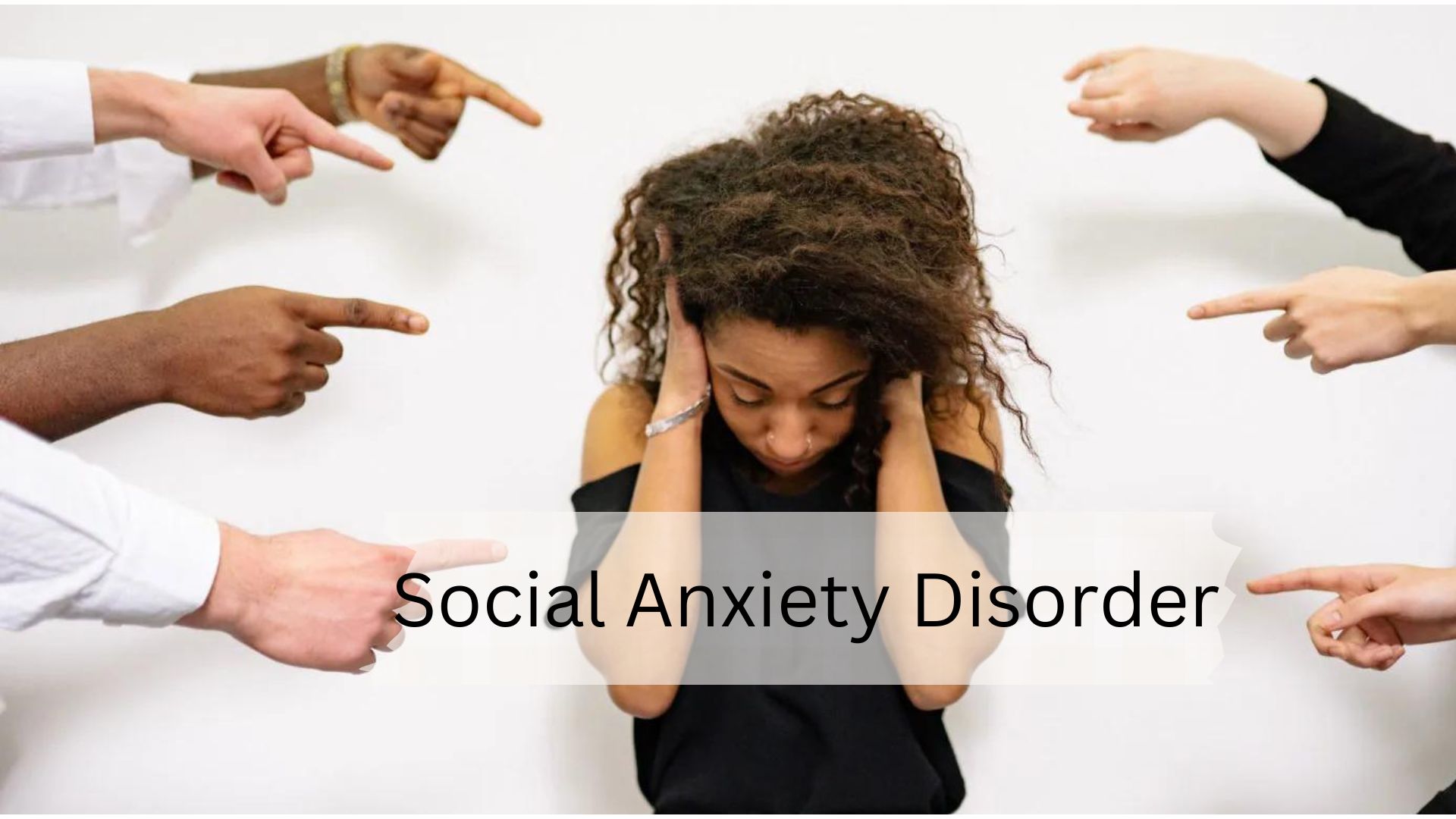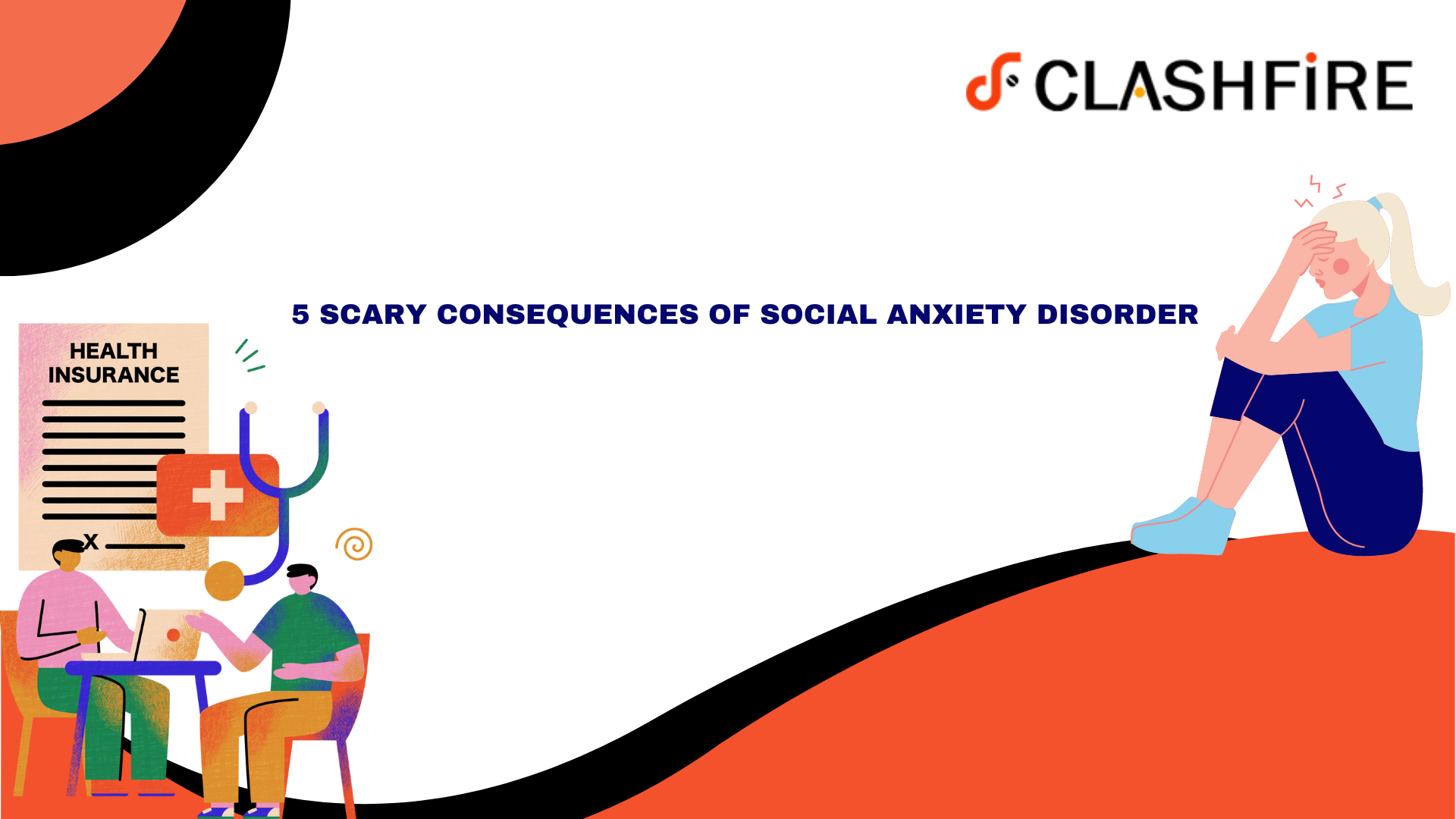Table of Contents
What is Social anxiety disorder?
Social Anxiety Disorder (SAD), or social phobia, is a debilitating mental health condition characterized by intense fear and anxiety in social situations. While it’s natural to feel nervous before social events, SAD takes these emotions to an extreme level, often leading to distressing consequences.
If left untreated, the impact of social anxiety disorder can be profound, affecting various aspects of a person’s life. Recognizing these consequences is crucial for seeking timely help and effective anxiety treatment.
Scary consequences of SAD
-
Isolation and Loneliness:
Social anxiety disorder can lead to persistent avoidance of social interactions and situations. This avoidance behavior often results in isolation and a deep sense of loneliness. Individuals with SAD may withdraw from friendships, family gatherings, and social events, causing them to miss critical social connections and support systems. The fear of negative judgment or humiliation can perpetuate this isolation, leading to a cycle of loneliness that worsens anxiety.
-
Impaired Academic and Occupational Performance:
SAD can significantly impact an individual’s ability to perform well in academic and work settings. Fear of public speaking, meeting participation, or casual conversations can lead to extreme anxiety and decreased performance. This can hinder educational and career advancement opportunities, leading to feelings of frustration and underachievement.
-
Hindered Personal Relationships:
Establishing and maintaining relationships can be immensely challenging for those with social anxiety disorder. The fear of being evaluated or forsaken can make forming or nurturing new connections difficult. Romantic relationships may suffer, as the fear of intimacy or vulnerability can hinder emotional closeness and bonding.
-
Negative Self-Esteem and Self-Worth:
The constant worry about how others perceive one can erode self-esteem and self-confidence. Individuals with SAD often have a distorted self-image, believing they are unlikable, dull, or incompetent. This negative self-perception can lead to a cycle of self-criticism and self-doubt, affecting overall self-worth and contributing to feelings of depression.
-
Substance Abuse and Depression:
Experiencing the symptoms of social anxiety disorder can lead to a higher likelihood of developing other mental health conditions like depression and substance abuse. In an attempt to manage their anxiety and temporarily alleviate the intense fear before social interactions, some individuals may turn to alcohol or drugs. Over time, this can lead to a dangerous cycle of dependency and worsen both the pressure and the associated mental health conditions.
Cause of SAD
The accurate cause of social anxiety disorder is not fully understood and likely involves a combination of genetic, environmental, and psychological factors. Here are some key factors that are believed to contribute to the development of social anxiety disorder:
-
Genetics:
Evidence suggests a genetic predisposition to anxiety disorders, including social anxiety. Individuals with a family history of anxiety disorders may be more likely to develop SAD.
-
Brain Chemistry:
Neurotransmitters are essential chemicals in the brain that transmit signals between nerve cells, and they significantly affect mood and anxiety levels. An imbalance or dysregulation of neurotransmitters, such as serotonin and norepinephrine, could contribute to the development of social anxiety disorder.
-
Environmental Factors:
Early life experiences, especially traumatic or negative experiences in social situations, may increase the risk of developing social anxiety. Childhood bullying, humiliation, or other adverse events can contribute to the development of a heightened fear of social judgment.
-
Social Learning:
Observing and internalizing the anxious behaviors or attitudes of parents, family members, or peers can influence the development of social anxiety. If a person grows up in an environment where social interactions are consistently portrayed as stressful or threatening, they may be more likely to develop similar attitudes.
-
Cognitive Factors:
Negative thought patterns and cognitive biases can play a significant role in developing and maintaining social anxiety disorder. Individuals with SAD tend to have distorted beliefs about themselves, others, and social situations, often overestimating the likelihood of adverse outcomes.
-
Temperament:
Certain personality traits, such as shyness, introversion, and a tendency to be self-critical, may contribute to the development of social anxiety. These traits can amplify the perception of social situations as threatening or overwhelming.
-
Social and Cultural Factors:
Societal and cultural influences can impact how individuals perceive social interactions and norms. Societies that emphasize high social standards, perfectionism, or competitiveness may contribute to the development of social anxiety in susceptible individuals.
It’s important to note that while these factors can raise the risk of creating a social anxiety disorder, they don’t guarantee its development. Many people may have some risk factors but do not develop SADly. Additionally, the interplay between these factors can be complex and vary from person to person.

Symptoms of SAD
Social Anxiety Disorder (SAD) symptoms include intense fear of social situations, excessive self-consciousness, avoidance of interactions, physical symptoms like sweating or trembling, overanalyzing interactions, difficulty speaking, and anticipatory anxiety. These symptoms can significantly impact daily life and well-being. Consulting a mental health professional is advised for accurate diagnosis and treatment.
Treatment:
It’s crucial to recognize the signs of social anxiety disorder and seek professional help if you or someone you know is experiencing these distressing consequences.
Effective anxiety treatment is available and can significantly improve the quality of life for individuals with SAD. Here are some recommended steps to take:
Consult a Mental Health Professional: A licensed therapist or psychiatrist specializing in anxiety disorders can diagnose social anxiety disorder and develop a tailored treatment plan. This plan may include psychotherapy, medication, or a combination of both.
Cognitive-Behavioral Therapy (CBT): CBT is one of the most effective therapies for social anxiety disorder. It helps people identify and contest harmful thought patterns and beliefs contributing to anxiety. Exposure therapy, a component of CBT, gradually exposes individuals to feared social situations, helping them build confidence and reduce stress.
Medication: Medication can be prescribed to manage symptoms of social anxiety disorder. Antidepressants such as selective serotonin reuptake inhibitors (SSRIs) and serotonin-norepinephrine reuptake inhibitors (SNRIs) often alleviate anxiety symptoms.
Support Groups: Participating in support or group therapy sessions with individuals with similar experiences can provide a sense of belonging and validation. Sharing stories and coping strategies can help reduce feelings of isolation.
Lifestyle Changes: Regular physical activity, relaxation techniques (such as deep breathing and mindfulness), and a healthy diet can contribute to overall mental well-being and help manage anxiety symptoms.
Gradual Exposure: With the guidance of a therapist, gradually exposing oneself to feared social situations can help desensitize the fear response and build confidence over time.
Social anxiety disorder is a severe condition that can have far-reaching consequences if left untreated. However, with the right combination of therapy, medication, and support, individuals can learn to manage their anxiety and regain control over their lives. Seeking help is the first step toward a brighter and more fulfilling future.
Conclusion
SAD is a severe issue that requires prompt treatment. If left untreated, it can worsen and even become life-threatening. It is essential to seek proper consultation and treatment to ensure an enjoyable everyday life.
